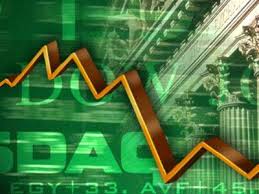Stock Future Market Exchange’s all over the world: there are top five exchanges for stock future market all over the world which are
NYSE Euro next, NASDAQ OMX, Tokyo Stock Exchange, London Stock Exchange, Shanghai Stock Exchange.
These exchanges are rated on the basis of market capitalization and trade values. If we talk about market capitalization it’s the number of issued shares by a publicly traded company in the market. It is equal to share price times with number of shares outstanding. And trade value is the instant of buying and selling of a product whether it is in domestic market or International market. Both of these terms decide the size and performance of an exchange. With the help of these you get information related with stock market and for making money from these markets you need accurate Stock Tips
NYSE Euro next: New York Stock Exchange, it is the biggest exchange in the world both in the terms of market capitalization as well as trade value. The exchange serves as the premium avenue for the listing of large and mid caps.
Headquartered in New York City.
Market Capitalization (2011, USD Billions) - 4,687;
Trade Value (2011, USD Billions) – 13,552.
NASDAQ OMX:
Headquartered in New York City.
Market Capitalization (2011, USD Billions) - 4,687;
Trade Value (2011, USD Billions) – 13,552.
The above figures make this exchange the second largest exchange in the world. There are about 3400 companies listed in this exchange and from the starting the main index is named as NASDAQ composite it is followed by S&P 500 index.
Tokyo Stock Exchange: There are about 2,292 companies listed in this exchange, these are arranged in three different sections. The large cap companies are listed in first section whereas the mid caps in the second one while the major section comprises of the startup companies which are in their growing stages.
Headquartered in Tokyo.
Market Capitalization (2011, USD Billions) – 3,325;
Trade Value (2011, USD Billions) – 3,972.
London Stock Exchange:
Headquartered in London.
Market Capitalization (2011, USD Billions) – 3,266;
Trade Value (2011, USD Billions) – 2,871.
These figures make it as the fourth largest exchange in terms of market capitalization and trade value.
Shanghai Stock Exchange:
Headquartered in Shanghai.
Market Capitalization (2011, USD Billions) – 2,357;
Trade Value (2011, USD Billions) – 3,658.
All these exchanges are responsible for the listing of large mid and small cap companies in the world.
Future market was initiated in the 18 century; future market is gaining much prominence from them till now. It has proved to be very useful for the economy. It brings together the traders from all across the globe and helps to estimate the economical conditions. Future market also helps in the reduction of the risk involved as the price for the commodities are already fixed and the quantity of the product can be estimated by the traders according to the need. The Commodity Futures Trading Commission (also known as the CFTC) is responsible for regulating the futures market in the United States. The movement tracked by the market is responsible for the buying and selling signals in the company’s shares or commodities. The Stock Future Tips are evolved through the analysis of the trends and charts of the market for trading. The risk free feature of the future market enables a trade for getting better results for investment.
NYSE Euro next, NASDAQ OMX, Tokyo Stock Exchange, London Stock Exchange, Shanghai Stock Exchange.
These exchanges are rated on the basis of market capitalization and trade values. If we talk about market capitalization it’s the number of issued shares by a publicly traded company in the market. It is equal to share price times with number of shares outstanding. And trade value is the instant of buying and selling of a product whether it is in domestic market or International market. Both of these terms decide the size and performance of an exchange. With the help of these you get information related with stock market and for making money from these markets you need accurate Stock Tips
NYSE Euro next: New York Stock Exchange, it is the biggest exchange in the world both in the terms of market capitalization as well as trade value. The exchange serves as the premium avenue for the listing of large and mid caps.
Headquartered in New York City.
Market Capitalization (2011, USD Billions) - 4,687;
Trade Value (2011, USD Billions) – 13,552.
NASDAQ OMX:
Headquartered in New York City.
Market Capitalization (2011, USD Billions) - 4,687;
Trade Value (2011, USD Billions) – 13,552.
The above figures make this exchange the second largest exchange in the world. There are about 3400 companies listed in this exchange and from the starting the main index is named as NASDAQ composite it is followed by S&P 500 index.
Tokyo Stock Exchange: There are about 2,292 companies listed in this exchange, these are arranged in three different sections. The large cap companies are listed in first section whereas the mid caps in the second one while the major section comprises of the startup companies which are in their growing stages.
Headquartered in Tokyo.
Market Capitalization (2011, USD Billions) – 3,325;
Trade Value (2011, USD Billions) – 3,972.
London Stock Exchange:
Headquartered in London.
Market Capitalization (2011, USD Billions) – 3,266;
Trade Value (2011, USD Billions) – 2,871.
These figures make it as the fourth largest exchange in terms of market capitalization and trade value.
Shanghai Stock Exchange:
Headquartered in Shanghai.
Market Capitalization (2011, USD Billions) – 2,357;
Trade Value (2011, USD Billions) – 3,658.
All these exchanges are responsible for the listing of large mid and small cap companies in the world.
Future market was initiated in the 18 century; future market is gaining much prominence from them till now. It has proved to be very useful for the economy. It brings together the traders from all across the globe and helps to estimate the economical conditions. Future market also helps in the reduction of the risk involved as the price for the commodities are already fixed and the quantity of the product can be estimated by the traders according to the need. The Commodity Futures Trading Commission (also known as the CFTC) is responsible for regulating the futures market in the United States. The movement tracked by the market is responsible for the buying and selling signals in the company’s shares or commodities. The Stock Future Tips are evolved through the analysis of the trends and charts of the market for trading. The risk free feature of the future market enables a trade for getting better results for investment.


 RSS Feed
RSS Feed